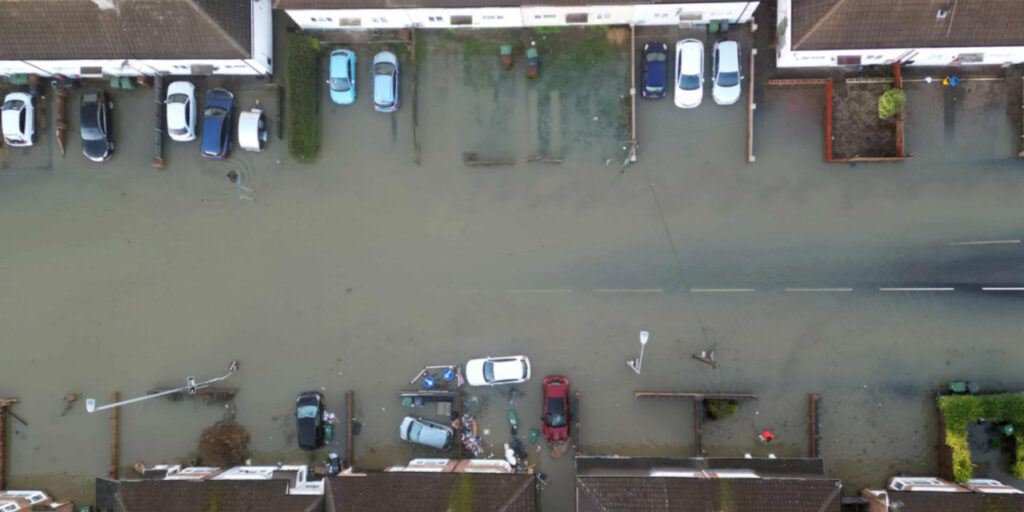Spending on flood defences is set to decline sharply next year, according to a new report, which calls on the chancellor to commit at least £1.5 billion annually in the upcoming spending review.
Experts warn that without this investment, both the economy and public safety will be at serious risk.
Nearly two million people across the UK face flooding threats each year, equivalent to the combined populations of Birmingham, Sheffield, and Newcastle upon Tyne.
A third of England’s critical infrastructure, including transport networks, energy systems, and water supplies, is also at risk, raising concerns over national security.
The physical damage caused by flooding to homes, businesses, and transport infrastructure already costs the UK an estimated £2.4 billion annually.
However, the economic impact extends far beyond immediate repair costs, with each year of severe flooding leading to a decade of economic downturn, valued at a minimum of £6.1 billion.
Current flood defence spending stands at £1.3 billion, falling short of the £1.5 billion recommended by the National Infrastructure Commission.
There is no confirmed funding commitment beyond next year, and the Treasury has been reviewing the affordability of future flood defence spending since the last autumn statement.
Emma Howard Boyd, a visiting professor at the Grantham Research Institute and former chair of the Environment Agency, who led the report, urged the government to take action where past administrations have failed.
She warned that the condition of existing flood defences has deteriorated further since previous recommendations, suggesting that more than £1.5 billion per year may now be needed to strengthen the UK’s flood resilience.
She highlighted that every pound invested in flood protection prevents approximately eight pounds in damage, with around three pounds of that being direct savings to the government.
This is due to the significant damage flooding inflicts on publicly owned infrastructure, such as roads, schools, and hospitals.
The risk of flooding is increasing rapidly across the UK. According to the latest data from the Environment Agency, 6.3 million properties, including residential homes and businesses, are in areas vulnerable to flooding from rivers, seas, and surface water.
By 2050, climate change is expected to push this number to eight million, meaning one in four properties could be at risk.
Howard Boyd also stressed the importance of ensuring that the government’s target of building 1.5 million new homes does not put more people in danger.
Investigations have revealed that more than 100,000 planned homes are likely to be built on high-risk floodplains unless urgent intervention takes place. Leading figures in the insurance industry are calling for an end to new developments in these areas to prevent further risk to lives and livelihoods.
Research from Public First shows that the majority of the English constituencies most vulnerable to flooding are Labour-held seats, with 74 percent of the top ten percent of at-risk areas under Labour control.
Public concern over the issue is growing, with polling for the report revealing that 66 percent of people believe neither the country nor their local area is adequately prepared for future flooding events.


